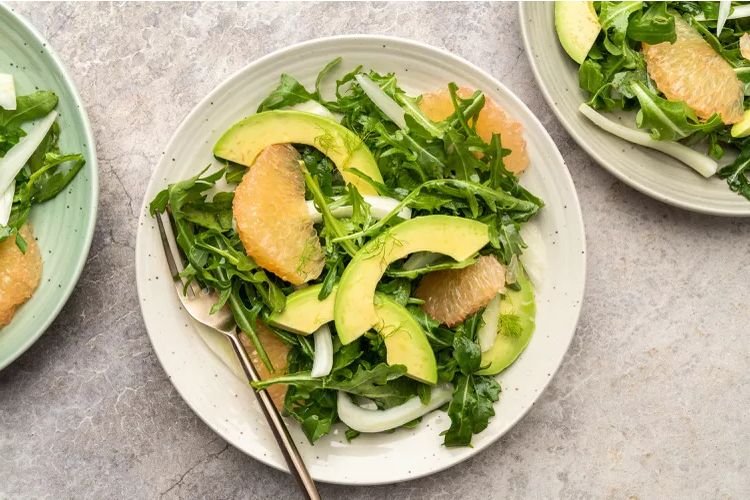Preparation Time: 15 minutes
Cooking Time: 0 minutes
Total Time: 15 minutes
Servings: 4
This Arugula salad is fresh, vibrant, and full of interesting flavors and textures. Sweet and tangy grapefruit pairs perfectly with spicy arugula, smooth avocado, and crunchy fennel. It’s light and refreshing, making it a great choice to cleanse your palate or help with digestion after a rich meal. The dressing is simple—just grapefruit juice mixed with olive oil.
I first tried a salad with grapefruit and fennel at a pizzeria and loved the combination right away. Since then, I’ve made many versions of it over the years, and the recipe below is now my favorite. I sometimes add beets too. You can use this basic idea and create your own variations based on what you like or what fresh ingredients you find at the market.
Ingredients
- 4 cups of fresh arugula
- 1 small fennel bulb (or half of a large one)
- 1 medium grapefruit (ruby red or pink), cut into pieces, with the juice saved
- 1 small ripe avocado
- The dark green part of 1 scallion
- 1/4 cup of extra-virgin olive oil
- A pinch of sea salt, or to taste
- A pinch of freshly ground black pepper, or to taste
Steps to Make It
01
Make sure you have all the ingredients ready before you start.
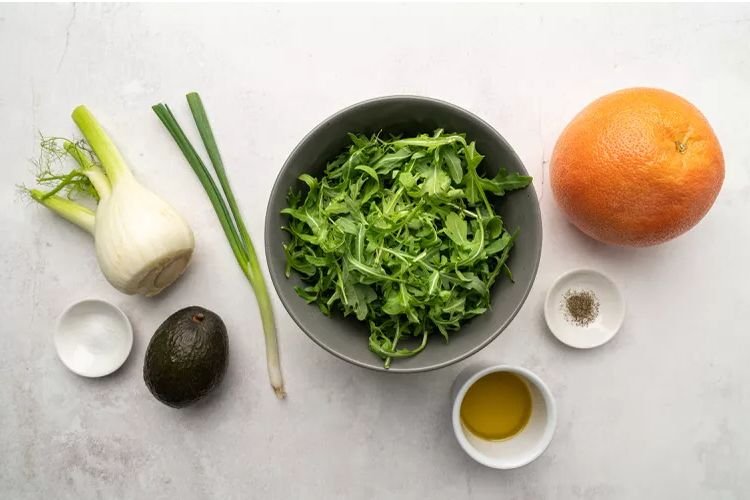
02
Wash the arugula well and make sure it’s completely dry.
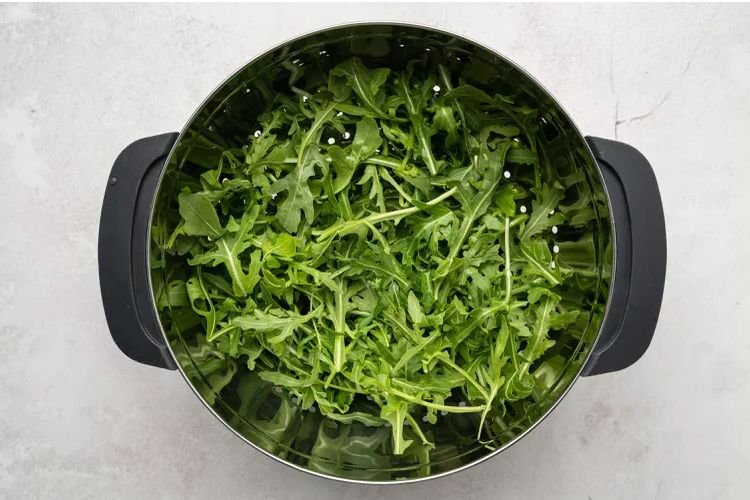
03
Remove the stalks from the top of the fennel bulb (save some of the leafy fronds for garnish). Cut off the tough root end, slice the bulb in half lengthwise, and then cut it into thin strips.
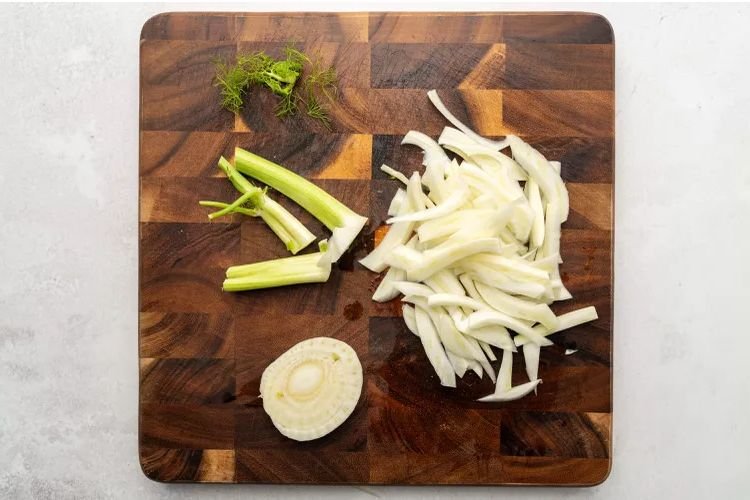
04
Slice the grapefruit into segments, making sure to remove all peel, membrane, and white pith. These refined segments are referred to as suprèmes. As you cut, collect any juice that is released, and don’t forget to squeeze the remaining core to extract every last bit of juice. This juice is important and will be used to dress the salad, enhancing its flavor with a fresh, citrusy touch.

05
Remove the skin from the avocado and cut it lengthwise into thin, even slices.
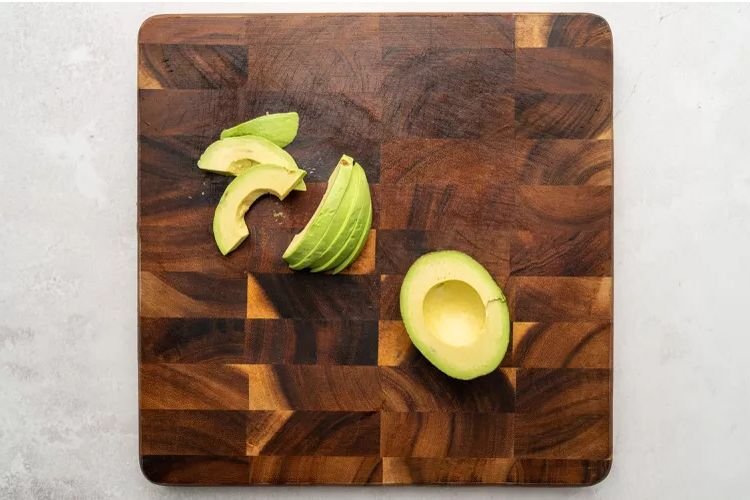
06
Cut the dark green portion of the scallion into thin slices, each approximately 1/4 inch in thickness.
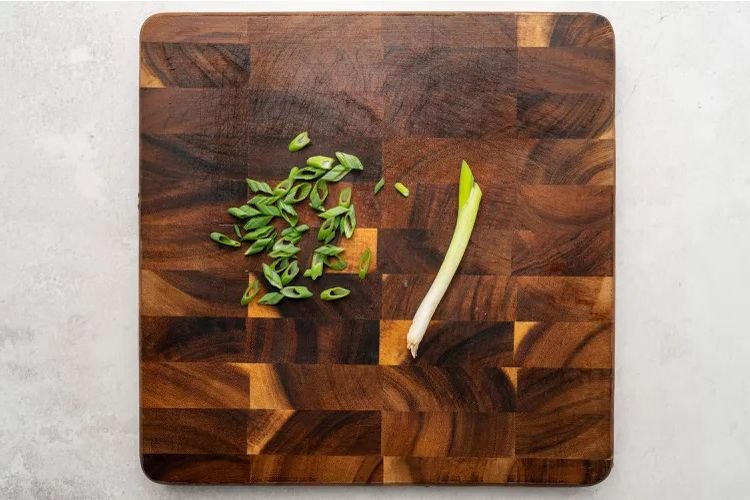
07
Vigorously mix the reserved grapefruit juice with the olive oil, and season with salt and pepper according to your preference.
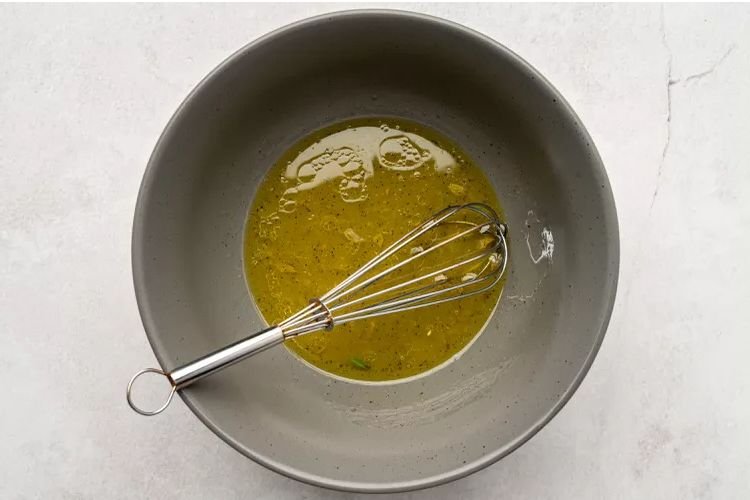
08
Gently combine the arugula and chopped scallion with the dressing, then distribute the mixture equally among 4 serving bowls or plates.
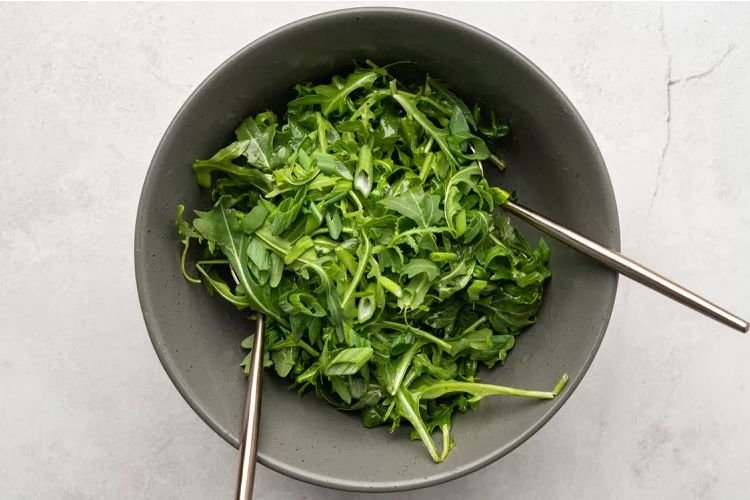
09
Place the fennel and avocado slices, along with the grapefruit segments, either on top or around each portion of arugula in the serving bowls or plates.
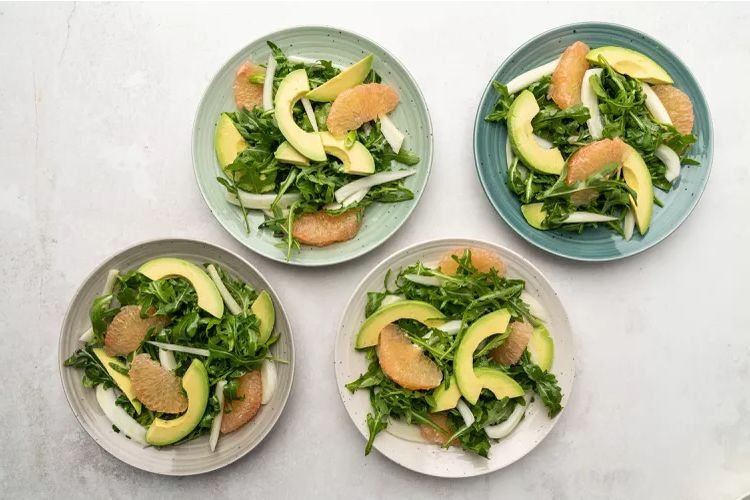
10
Sprinkle finely chopped fennel fronds, taken from the stalks, over the dish as a garnish.
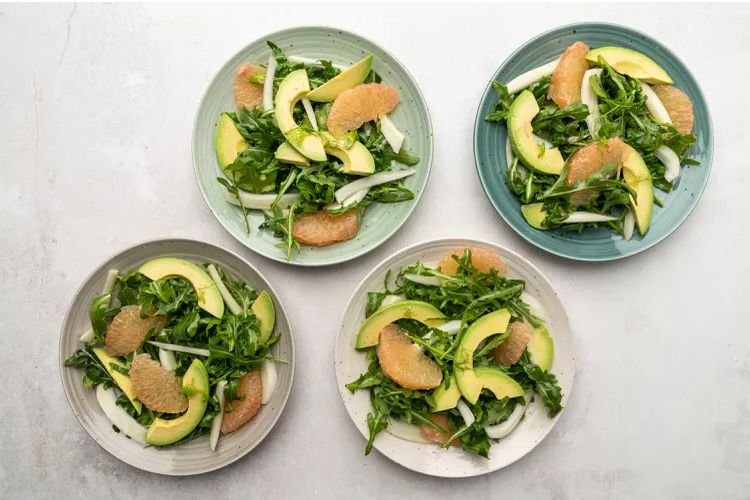
Recipe Variations
Replace the grapefruit with blood oranges or standard oranges.
Swap the arugula for watercress or any other salad greens of your choice.
Enhance the dish by adding toasted pine nuts or walnuts, roasted beets, or pomegranate seeds for extra flavor and texture.
Nutrition Facts (per serving)
- Calories: 429
- Fat: 29g
- Carbohydrates: 45g
- Protein: 6g
FAQs:
1. Can I make this Arugula Salad ahead of time?
Yes, you can prepare some components in advance to save time! The fennel can be thinly sliced, the scallions chopped, and the grapefruit segmented a few hours ahead. Store these ingredients separately in airtight containers in the fridge to maintain their freshness. However, to keep the Arugula Salad and vibrant, wait to assemble the Arugula Salad and add the dressing until just before serving. This ensures the greens don’t wilt and the flavors remain bright and lively.
2. What does fennel taste like, and can I substitute it?
Fennel has a unique flavor profile that’s mildly sweet, crisp, and slightly reminiscent of licorice or anise. When raw, it adds a refreshing crunch to Arugula Salad and pairs beautifully with the tangy grapefruit and peppery arugula. If fennel isn’t your favorite or you can’t find it, you can substitute it with thinly sliced celery, shaved Brussels sprouts, or even jicama for a similar crunchy texture. Each alternative will bring its own subtle flavor twist to the dish.
3. Can I use bottled grapefruit juice instead of fresh?
While fresh grapefruit juice is highly recommended for its vibrant, zesty flavor, you can use bottled juice if you’re in a pinch. Look for 100% pure grapefruit juice without added sugars or preservatives to maintain the Arugula Salad’s fresh and natural taste. That said, fresh juice has a brighter, more complex flavor that really elevates the dish, so it’s worth the extra effort if possible.
4. How do I store leftovers?
This Arugula Salad is best enjoyed fresh, but if you have leftovers, store them in an airtight container in the fridge for up to 1 day. Keep in mind that the arugula may wilt slightly, and the avocado may brown due to oxidation. To minimize browning, you can drizzle a little extra lemon or lime juice over the avocado slices before storing. While the salad will still taste good, its texture and appearance are at their peak when served immediately.
5. Is this Arugula Salad vegan-friendly?
Yes, this Arugula Salad is naturally vegan! The dressing is made with simple, plant-based ingredients like fresh grapefruit juice, olive oil, salt, and pepper. It’s a light, refreshing, and wholesome option that fits perfectly into a vegan or plant-based diet. Plus, it’s packed with nutrients and vibrant flavors that everyone can enjoy.
6. Can I add protein to make it a complete meal?
Absolutely! This Arugula Salad is versatile and can easily be turned into a hearty main course by adding your favorite protein. Grilled chicken, shrimp, tofu, or even chickpeas are excellent options that complement the flavors of the salad. For a more luxurious touch, you could also add flaked smoked salmon or crumbled feta cheese. These additions not only make the salad more filling but also add layers of flavor and texture.
7. What’s the best way to segment a grapefruit?
Segmenting a grapefruit (also known as “supreming”) is a technique that removes the peel, membrane, and pith, leaving behind only the juicy, tender fruit. Here’s how to do it:
Start by cutting off the top and bottom of the grapefruit to create a stable base.
Use a sharp knife to slice away the peel and white pith, following the curve of the fruit.
Hold the grapefruit over a bowl to catch any juice, and carefully cut between the membranes to release the segments.
Once all the segments are removed, squeeze the remaining core to extract every last drop of juice, which can be used in the dressing.
This method ensures you get clean, beautiful segments without any bitterness from the pith or membranes.
8. Can I use a different type of citrus?
Absolutely! While grapefruit adds a tangy, slightly bitter flavor that works wonderfully in this Arugula Salad, you can easily swap it out for other citrus fruits. Blood oranges are a fantastic alternative—they’re sweeter and have a stunning deep red color. Regular oranges, tangelos, or even cara cara oranges (which have a pinkish hue) also work well. Each citrus variety will bring its own unique sweetness and acidity, allowing you to customize the salad to your taste preferences.
9. What makes this Arugula Salad so refreshing?
The refreshing quality of this Arugula Salad comes from the perfect balance of flavors and textures. The crisp, slightly sweet fennel contrasts beautifully with the juicy, tangy grapefruit, while the peppery arugula adds a fresh, slightly spicy note. The light citrus dressing ties everything together, enhancing the natural flavors of the ingredients without overpowering them. It’s a symphony of freshness that’s perfect for brightening up any meal, especially during warmer months.
10. Are there any nut-free alternatives for added crunch?
If you’re avoiding nuts but still want to add some crunch to the Arugula Salad, there are plenty of nut-free options. Toasted pumpkin seeds (pepitas) or sunflower seeds are excellent alternatives that provide a satisfying crunch and a boost of nutrients. You could also try adding crispy chickpeas or even croutons for a different texture. These substitutions ensure the salad remains allergen-friendly while still delivering that delightful contrast of textures.

